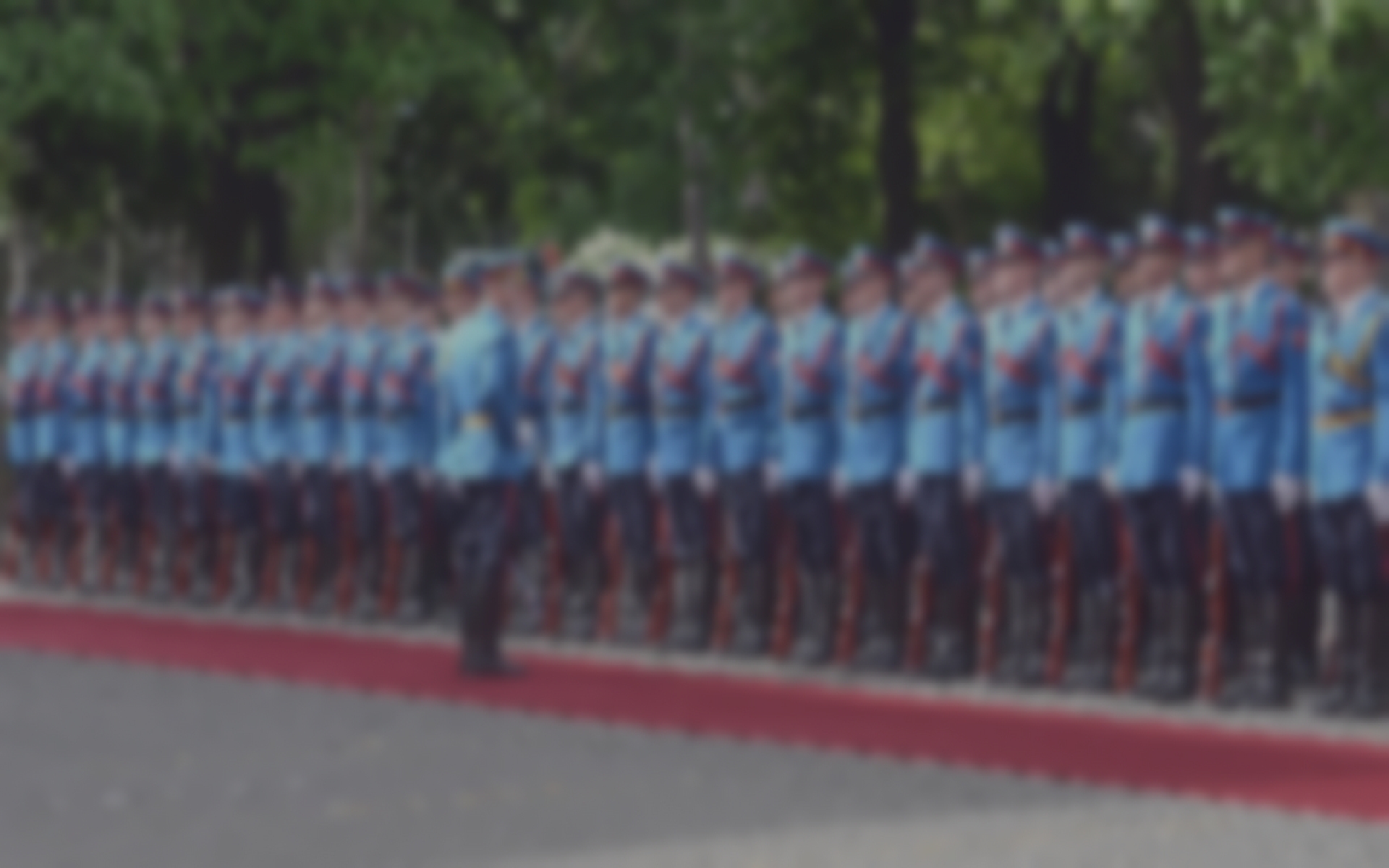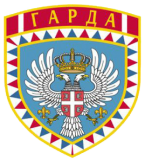The Honour Guard
The Guard units have been established since the earliest times in order to provide ruler’s security. Over the centuries, the personal bodyguards of the ruler have always been the most loyal part of the military and the last protection of the sovereign. Their members have always been carefully selected since they have been expected to be capable of accomplishing the most difficult tasks and to face the most dangerous situations.

In the times of monarchies, the Guard was developing as the power of the Prince or the King was growing. Also in the period after the French Revolution, the Guard was not the highest level of a person’s security but it became the symbol of the Republic defence. It has been established as the most elite unit of the state armed forces. Regardless of the type of government, the Guard has retained the role of the honor guard.
The establishment and development of the Guard is closely connected with the establishment and development of the Serbian Armed Forces and Serbian state in general. The first steps in organizing regular Serbian Armed Forces started during the First Uprising of Karadjordje when a battalion of regular soldiers (regulasi) was formed. Although the Guard was formally established in the first half of the 19th century, during the First Uprising there was a unit formed from a few uniformed men – the Serbian Guard whose task was to protect Soviet and detachment of 30 Cossacks of the Serbian Cossack regiment. They were Karadjordje’s personal escort and protection.
Since 1825 Prince Milos Obrenovic had been trying to establish the military organization in the Administrative Center of Belgrade recruiting policemen and soldiers.
After the Ottomans had been defeated by the Russians in 1829 Prince Milos managed to establish the Prince Guard. That was the basis of the regular Serbian military, especially the Guard. The Guard was dressed and modeled as the Russian Royal Guard which was the most elite military unit at that time.
The Prince Guard had its first public performance in 1830 during the reading of the Hatiserif. At that time the Guard was lined up in front of the Lord’s Residence and the New Residence – the Residence of the Princess Ljubica in Savamala and Varos kapija. The Guard then had an encouraging impression on Serbs, but it had a discouraging one on the Turks because the Guard was a synonym for the right Serbian military, the strength of the new awakened Serbia.
Since 28th July 2013 the Guard renewed the tradition of the honour guard and the guardsmen have been in front of the General Secretariat of the President of the Republic at Andricev Venac.
The honour guard is a specific ceremonial expression of self-consciousness about the state, its institutions and the armed forces. Generally, standing in front of those institutions, the honour guard represents power, training and military skills, and secures them and represents steadfastness and strength in defending the heritage.
The dignity of the Guardsmen and their weapons and uniforms emphasize the elite of the unit and maturity of the armed forces which they belong to. The changing of the Guard ceremony points out creative understanding of the Armed Forces role in contemporary society. Standing still indicates that they are completely focused and dedicated to the assigned task, and simultaneous changeof the motions indicates that individuals perform as precisely as a team. The role of the Honour Guard is to represent the importance of the institution of the President of the Republic where the state decisions are made. By its presence it shows that the Armed Forces are there to support and protect the state interests. Standing at the entrance of the President's office represents the Guard and the Serbian Armed Forces in general as a stable and vital support and a state pillar.
The Honour Guard as a symbol may be interpreted and considered differently, from socio-psychological, anthropological and other aspects. There are even some elements of folklore and tourist significance.
The Guardsmen who are selected to give the honours in front of the General Secretariat of the President of the Republic have a very high level of security clearance and during the selection process the requirement is to be a person of outstanding moral character. They are very carefully selected, chosen by their traits and of impeccable discipline. They are patriots, honest, loyal and they respect their tradition and history. They are here today in order to cherish those values, as well as they did more than one hundred and eighty years ago, and in tough times to make them again so proud of themselves, their armed forces and Serbia.
The Honour Guard During the History
During his reign, Prince Milos Obrenovic established the guard from the soldiers who were patrolling in front of his residence in Pozarevac and Kragujevac.
When King Petar I Karadjordjevic came back to Serbia after the May Coup, he settled in the Old Palace near Terazije. Although the regiment of the King's Guard was disbanded, the Palace Guard was established and the activities were performed by the Guard Infantry Company. The Royal Guard was patrolling around the Palace (King Aleksandar moved into a new residence in 1922) and around the residence in Senjak until the King moved into a newly built residence in Dedinje in 1929.
There were 48 military departments which were responsible for recruiting soldiers for serving in the Royal Guard on the territory of Kingdom of Yugoslavia. Among general requirements, there were also special requirements: to be healthy and not from the infected regions, to be from good, honest and completely reliable families; to be land tillers from rural regions regardless of their financial status, to conduct appropriately and if it is possible to be literate; also to be well-built and good-looking and those capable of serving the full military service.
It was very important to be taller than 172 cm. It was taken into account that there are representatives of all nationalities living on the territory of Yugoslavia, they received 80 Arnauts, and the rule was to receive representatives from all Montenegrin tribes equally.
The Honour Guard was given by the officers from the Officer Company in front of the entrance of the institutions (in Belgrade as well as outside of it) where Marshal Tito was receiving his local and foreign guests, federal and republic officials, senior military leaders, social and political professionals, as well as political party members, and various delegations. Therefore, they used to pick the officers who approximately were the same height and weight. On both sides of the entrance, there were two officers who did not salute to the guests, but they were standing at attention with eyes facing forward the line of sight parallel to the ground. The Honour Guard was also in front of the residences where foreign officials were staying.


